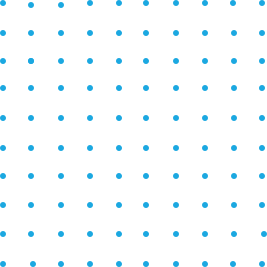Piedmont Plastics carries corrosion resistant and chemical resistant industrial PVC type II for use in consoles, acid baths, junction boxes.

PVC Type 2
Versatile, durable, flame-resistant thermoplastic for diverse industrial applications.
-
Fabrication Support
Cut-to-Size, Routing
-
Local
Inventory Stocking
-
National
Inventory Access
Product Overview
Widely used for:
Performance Characteristics:
Polyvinyl chloride (PVC) Type 2, often referred to simply as PVC, is a versatile thermoplastic polymer that has found widespread use in various industries due to its desirable properties and ease of processing. In this comprehensive exploration, we will delve into the chemical composition, manufacturing process, properties, and common applications of PVC Type 2.
Introduction to PVC Type 2
PVC Type 2 belongs to the family of polyvinyl chloride polymers, characterized by the presence of chlorine atoms in its molecular structure. It is produced through the polymerization of vinyl chloride monomers, which are derived from the hydrocarbon ethylene. This polymerization process results in a linear polymer chain with chlorine atoms attached to the carbon backbone, imparting unique properties to the material.
Chemical Composition and Structure
PVC Type 2 is composed of repeating vinyl chloride units, represented by the chemical formula (C2H3Cl)n, where 'n' denotes the degree of polymerization, or the number of repeating units. The addition of chlorine atoms provides PVC with its distinctive properties, including flame resistance, chemical inertness, and durability.
The polymer chains in PVC Type 2 can vary in length, leading to differences in molecular weight and material characteristics. Additionally, PVC formulations may contain additives such as plasticizers, stabilizers, lubricants, and pigments to enhance specific properties and tailor the material for particular applications.
Manufacturing Process
The production of PVC Type 2 involves several stages, starting with the synthesis of vinyl chloride monomers. This monomer is obtained through the chlorination of ethylene gas in a controlled chemical reaction. Subsequently, the vinyl chloride monomers undergo polymerization, facilitated by heat and pressure, to form PVC resin particles.
Once polymerized, the PVC resin is processed using various techniques, including extrusion, injection molding, calendaring, and compression molding, to produce finished products of desired shapes and sizes. During processing, additives may be incorporated into the PVC formulation to modify properties such as flexibility, impact resistance, and color.
Properties of PVC Type 2
PVC Type 2 exhibits a diverse range of properties that make it suitable for numerous applications:
Durability: PVC is known for its exceptional durability and resistance to weathering, abrasion, and chemical exposure, making it suitable for outdoor applications and harsh environments.
Flame Resistance: PVC is inherently flame retardant, meaning it does not support combustion readily and self-extinguishes when the heat source is removed, enhancing its safety profile.
Mechanical Strength: While rigid PVC exhibits high mechanical strength and rigidity, flexible PVC formulations can be engineered to provide elasticity and resilience, offering versatility in applications.
Chemical Inertness: PVC is resistant to many chemicals, acids, alkalis, and corrosive substances, making it ideal for use in chemical processing, piping systems, and containment applications.
Electrical Insulation: PVC possesses excellent electrical insulation properties, making it suitable for cables, wires, and electrical components.
Cost-Effectiveness: PVC is a cost-effective material compared to alternatives such as metals, ceramics, and other polymers, contributing to its widespread use in various industries.
Common Applications
PVC Type 2 finds extensive application across diverse industries and sectors, including:
Construction: PVC is widely used in construction for applications such as pipes, fittings, siding, window profiles, decking, roofing membranes, and flooring. Its durability, corrosion resistance, and ease of installation make it a preferred choice for building materials.
Piping Systems: PVC pipes and fittings are extensively used for conveying water, wastewater, chemicals, and gases in municipal, industrial, agricultural, and residential settings. The smooth interior surface of PVC pipes facilitates efficient fluid flow while resisting scaling and corrosion.
Electrical and Electronics: PVC is employed in the electrical and electronics industry for insulation and sheathing of wires, cables, and electronic components due to its excellent electrical properties and flame resistance.
Automotive: PVC is utilized in automotive applications for interior trim, upholstery, dashboard components, door panels, wire harnesses, and under-the-hood parts due to its durability, impact resistance, and flame retardancy.
Healthcare: PVC is widely used in healthcare settings for medical tubing, IV bags, blood bags, surgical gloves, catheters, and medical devices due to its biocompatibility, flexibility, and ease of sterilization.
Packaging: PVC is employed in packaging applications for shrink wrap, cling film, blister packaging, and rigid containers due to its clarity, barrier properties, and versatility in processing.
Consumer Goods: PVC is found in a wide array of consumer products such as toys, furniture, footwear, inflatable structures, and household items due to its affordability, durability, and ease of fabrication.
PVC Type 2 is a versatile thermoplastic polymer with a diverse range of applications across various industries. Its unique combination of properties, including durability, flame resistance, chemical inertness, and cost-effectiveness, makes it a preferred choice for numerous applications ranging from construction and piping systems to electrical insulation, automotive components, healthcare products, packaging, and consumer goods. As advancements in polymer science and manufacturing technologies continue, PVC is expected to remain a vital material in the global economy, meeting the evolving needs of modern society.
Talk to An Expert In
Baltimore/Washington
7045 Troy Hill Drive
301-881-7900







